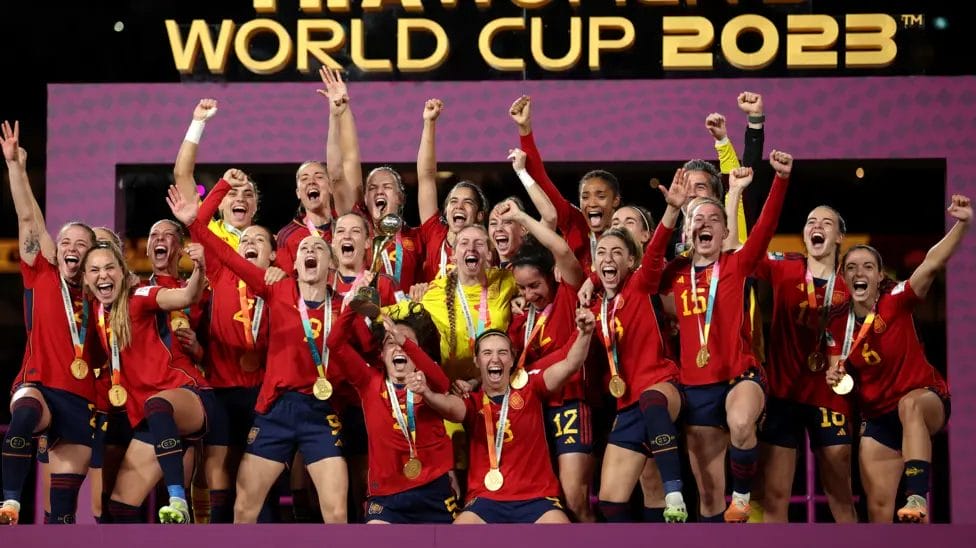
Exploring the pros and cons of a 48-team Women’s World Cup
“FIFA was right.”
That was the bold statement made by FIFA president Gianni Infantino following the 2023 Women’s World Cup, which saw the tournament expand from 24 to 32 teams. It was a gamble that many initially questioned, but the results spoke for themselves: surprise performances, dramatic upsets, and a wider representation of talent from around the globe.
Now, Infantino is going one step further. By 2031, FIFA plans to grow the Women’s World Cup again—this time to 48 teams, mirroring the expansion of the men’s tournament. It’s an ambitious move, and one that has the football world asking a big question: would a 48-team Women’s World Cup actually be good for the game?
Let’s take a closer look at the arguments on both sides of the debate.
How did the 32-team format perform in 2023?
The 2023 tournament in Australia and New Zealand marked a new chapter in the Women’s World Cup story. Eight new teams made their debut, and their presence added new layers of unpredictability and excitement to the competition.
African teams, in particular, shone. Nigeria, South Africa, and Morocco—ranked 40th, 54th, and 72nd respectively—each made it to the round of 16, proving that world rankings don’t always tell the full story. Morocco even knocked out two-time champions Germany, a feat that few predicted. Meanwhile, Zambia, the lowest-ranked team in the tournament at 81st, managed a win over Costa Rica and finished third in their group.
In total, only three nations—Costa Rica, Haiti, and Vietnam—failed to register a single point, and only Vietnam didn’t manage to score. While there were a few lopsided results—like the Netherlands’ 7-0 thrashing of Vietnam and Norway’s 6-0 win over the Philippines—those matches were the exception, not the norm.
For many, the 2023 edition proved that expanding the field made for a better, more inclusive tournament. England head coach Sarina Wiegman, who was initially skeptical about the jump to 32 teams, later admitted it helped make the tournament more competitive and beneficial for developing nations.
The upside of a 48-team Women’s World Cup
If the leap from 24 to 32 was a success, could going from 32 to 48 be even better? For many within the sport, the answer is yes.
First, there’s the obvious benefit of inclusion. To date, only 44 countries have ever played in a Women’s World Cup. Increasing the number of qualifying spots would open the door for dozens of new nations to participate and experience top-level competition.
US Soccer CEO JT Batson called the expansion an incredible opportunity for global growth, especially in nations where the women’s game is still developing.
“A lot of federation leaders view the Women’s World Cup as their best shot at qualifying for a major tournament,” Batson explained. “It could drive investment and build momentum in countries where women’s football isn’t yet a priority.”
The ripple effect of that investment could be huge. More visibility means more sponsorship, better infrastructure, and, crucially, greater cultural acceptance of women in sport.
From a UK perspective, this move could provide opportunities for nations like Scotland, Wales, Northern Ireland, and the Republic of Ireland, all of whom have struggled to break into the World Cup in recent years. England might be flying high on the global stage, but for the other home nations, more qualifying places could make the dream of World Cup football a reality.
The downside: Could more mean less?

Of course, not everyone is convinced that bigger is better. The fear among some experts is that an expanded field could water down the quality of the competition.
Former England goalkeeper Karen Bardsley voiced concerns over competitive balance, wondering whether too many one-sided games might harm the tournament’s appeal. “There’s a real risk of diluting the product,” she said. “Nobody wants to see a string of 6-0 or 7-0 scorelines.”
There are also concerns about player welfare. A 48-team format means more matches—likely increasing the total from 64 to 104—and a longer tournament, potentially stretching over an extra 10 days as it will in the men’s edition in 2026.
“You’re asking players to take on more games in an already jam-packed calendar,” Bardsley added. “That has consequences for their bodies and for their commitments to club football.”
Another challenge lies in ensuring that all participating nations are adequately supported. At the 2023 World Cup, several teams—including Jamaica—publicly criticized their federations for poor planning, lack of funding, and insufficient facilities.
Simply handing out more World Cup places won’t solve those problems. Without the right resources and long-term investment, more nations may qualify—but fewer may thrive.
What is FIFA doing to support development?
To their credit, FIFA says they’re investing heavily in the women’s game. The organization launched its Women’s Football Strategy in 2018 and set a target of having 60 million girls and women playing the sport globally by 2027.
Through the Women’s Development Programme, national associations can apply for funding and access expert guidance to grow the game. The idea is that expansion won’t just be a numbers game—it will come with a commitment to raise standards across the board.
Bardsley remains cautiously optimistic. “There’s time, and there’s opportunity,” she said. “If FIFA is serious about this, and if they keep pushing the women’s game now, we could see real results by 2035.”
FIFA has also committed to equal prize money for the men’s and women’s tournaments by 2027, a landmark promise that could reshape the commercial landscape for women’s football.
How would a 48-team Women’s World Cup work?
While FIFA hasn’t yet confirmed the format for a 48-team Women’s World Cup, the men’s 2026 blueprint provides a possible model.
Originally, the plan was to have 16 groups of three teams, with two advancing from each group. But critics warned that this could encourage teams to collude in final matches and eliminate fair play.
So FIFA pivoted. Now, the 48 men’s teams will be divided into 12 groups of four, with the top two from each group and the eight best third-placed teams moving into a 32-team knockout phase.
If the women’s tournament follows suit, it could mean a thrilling new format—but it would also mean 40 additional games. That could pose logistical challenges, both for players and host nations.
Still, for fans and broadcasters, more games could mean more opportunities for storytelling, more breakout stars, and more global attention.
Final whistle: Time to think big
Is a 48-team Women’s World Cup the right move? There’s no easy answer. It brings undeniable risks—dilution of quality, player fatigue, and questions around infrastructure. But the potential upside is massive.
More nations involved means more exposure, more opportunity, and more progress for women’s football worldwide. If FIFA pairs expansion with genuine, lasting investment, it could be the moment that takes the women’s game to its next frontier.
So maybe, just maybe, FIFA is right again.







